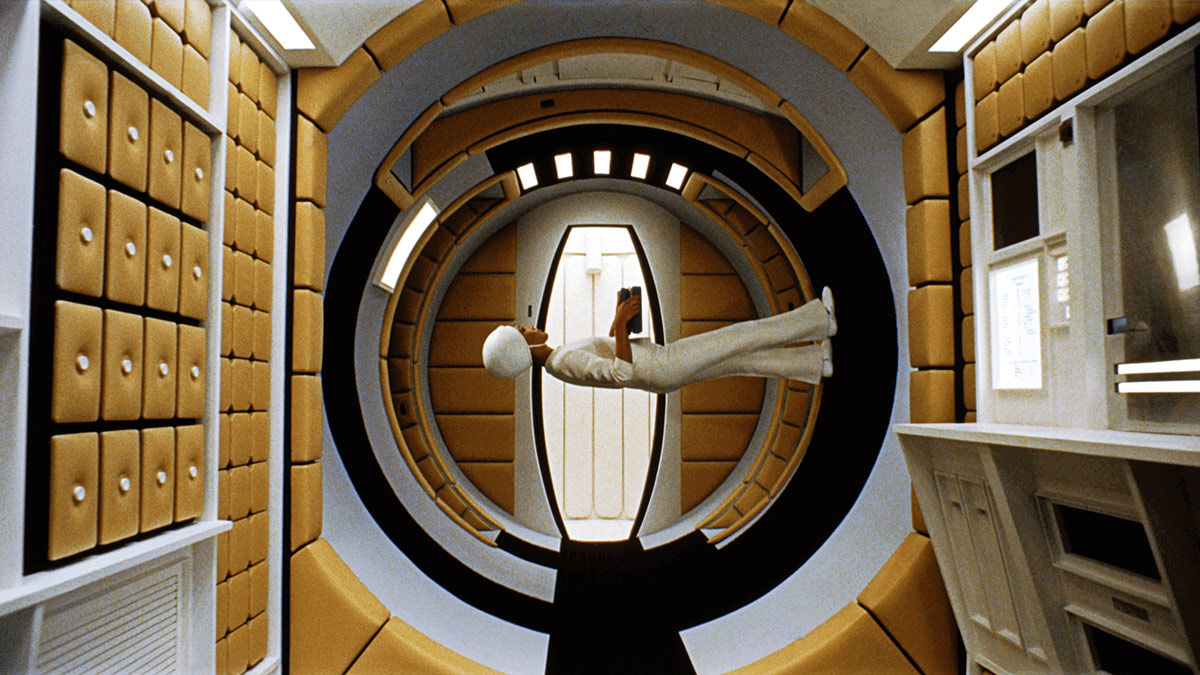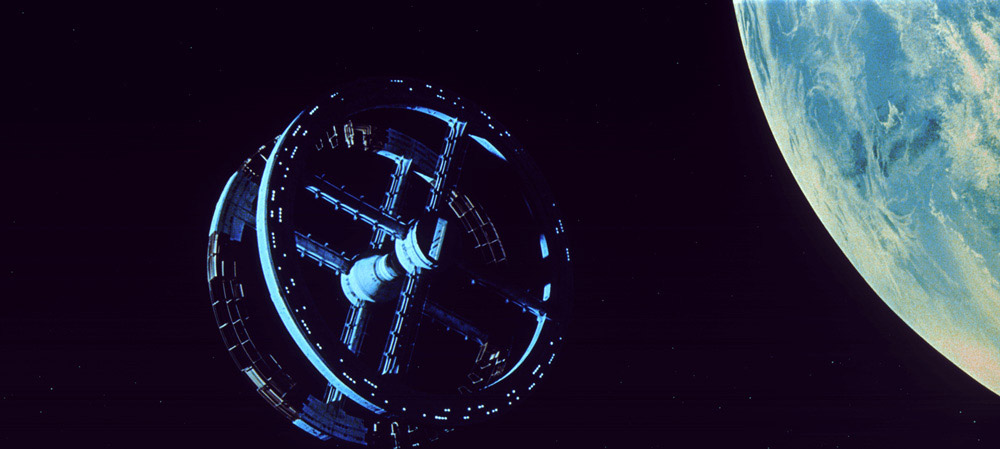
(c)1968 Turner Entertainment Co. All rights reserved.
What is the significance of watching ``2001: A Space Odyssey'' in 70mm print and IMAX digital?
2018.10.02
Why ``2001: A Space Odyssey'' was made in 70mm
By the way, why was ``2001: A Space Odyssey'' made in 70mm?
According to the research book ``Film Director Stanley Kubrick'' (authored by Vincent Lobrot, published by Shobunsha), which conducted extensive interviews with people involved, Kubrick initially considered using ``VistaVision'' for filming. However, Robert Gaffney (cinematographer, who was involved in the camera design for the Cinerama [aka Cine Miracle] film ``20,000 Leagues in the Atlantic'' (1958)), who shot the end sequence of this film, said that there are other excellent films out there. He suggested it to Kubrick, and apparently he settled on 70mm. VistaVision is a large-format film standard that drives 35mm film horizontally, dedicating an area equivalent to about two frames to image capture to achieve high image quality. The aspect ratio is 1:1.66, and works shot using this method include `` White Christmas '' (54) and `` Vertigo '' (58), as well as `` Star Wars: The Empire Strikes Back '' (1980). It is also used to create composite shots.
I would have liked to have seen ``2001: A Space Odyssey,'' which was shot with VistaVision...I think that, but once Kubrick decided to use this standard, access to the large-format film for this film was inevitable. You could say it was something. At that time, NASA's ``Manned Space Flight Plan'', which would take humans to the moon, was making headlines in the media, and people's interest in space was strong. The creators had the firm idea of venturing into such unknown territory in a movie using a dynamic wide screen. Originally, the reference work for this work was Cinerama's 360-degree panoramic experience film ` `To The Moon And Beyond '' (64), and ``2001: A Space Odyssey'' was designed to be a large-scale movie in order to provide a simulated experience of outer space. It was a natural progression to take this approach.

“2001: A Space Odyssey” (c)1968 Turner Entertainment Co. All rights reserved.
Fortunately, MGM and Cinerama, the producers of ``2001: A Space Odyssey,'' have jointly worked on two Cinerama feature films, `` A History of the Wild West '' and ``The Wonders of the World'' (62). It had an advantage over other large-scale films. As a side note, Kubrick and original author Arthur C. Clarke chose the initial working title for 2001: A Space Odyssey as "How the solar system Was Won." )". This is a play on the original title of ``How the West Was Won,'' and is a well-written episode that serves as a prelude to a major movie.
Above all, since ``2001: A Space Odyssey'' is a work that makes extensive use of special photography, the use of 70mm was appropriate in order to avoid degrading the image quality through compositing and processing. However, Kubrick avoided optical compositing, which required multiple duplication, and used multiple exposures (a method of capturing multiple images in a single frame), and even in scenes where handheld cameras were used to create a sense of realism, he was able to avoid optical compositing, which is lightweight and lightweight. For example, he thoroughly operates a 65mm camera instead of a 35mm camera, and uses 70mm not to reduce creative risks, but to bring out its specs.

“2001: A Space Odyssey” (c)1968 Turner Entertainment Co. All rights reserved.
I'm sure everyone will recognize Kubrick's creative orientation as that of his supervisor, Christopher Nolan. Nolan himself has worked on super-sized IMAX films such as `` The Dark Knight '' (2008) and `` The Dark Knight Rises '' (2012). Efforts such as prioritizing the impact of the subjects and landscapes projected by IMAX, minimizing digital processing as much as possible, and using a heavy IMAX camera handheld are exactly similar to the film approach used in ``2001: A Space Odyssey.'' .
Moreover, since Nolan directed a scientific space exploration film called `` Interstellar '' (2001: A Space Odyssey,'' it is hard to believe that he was involved in this re-screening of prints as a mere cultural project. . He himself is a fan of film, and must feel that he has a sense of creativity that is a direct descendant of Kubrick, who made the most of large-format film. The significance of this film screening may be that we can confirm the ``inheritance of creative styles'' by these new and old filmmakers.

